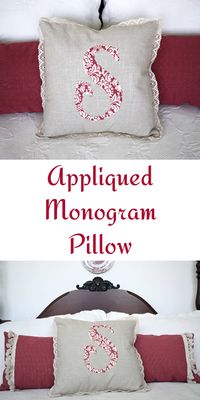Applique
Appliqué [Source 1] lace refers to various types of lace where the decorative motifs are applied (sewn) to an existing openwork fabric such as tulle, netting, filet or drawn thread work and cut-work. The motifs can be either hand-made (needle, bobbin lace, or embroidered fabric) or machine-made. The same is true for the ground fabric.
An appliqué is a device applied to another surface. The technique is very common in some kinds of textiles, but may be applied to many materials. In the context of ceramics, for example, an appliqué is a separate piece of clay added to the primary work, generally for the purpose of decoration.
Appliqué is ornamental needlework in which pieces or patches of fabric in different shapes and patterns are sewn or stuck onto a larger piece to form a picture or pattern. It is commonly used as decoration, especially on garments. The technique is accomplished either by hand stitching or by machine. Appliqué is commonly practiced with textiles, but the term may be applied to similar techniques used on different materials. In the context of ceramics, for example, an appliqué is a separate piece of clay added to the primary work, generally for the purpose of decoration.
The term originates from the Latin applicō "I apply" and subsequently from the French applique "attach". Appliqué is a surface pattern that is used to decorate an aspect of a garment or product. It has been around since sewing was invented. In earlier years people sewed it by hand but nowadays people use sewing machines.
Types
Applied pieces usually have their edges folded under, and are then attached by any of the following:
- Straight stitch, typically 20-30mm in from the edge.
- Satin stitch, all around, overlapping the edge. The patch may be glued or straight stitched on first to ensure positional stability and a neat edge.
- Reverse appliqué: the attached materials are sewn together, then cut away where another material covers it on top, before being sewn down onto the edges of the original material.
Sources
- ↑ !Sm-201 2017-0316 backup
Chat rooms • What links here • Copyright info • Contact information • Category:Root
